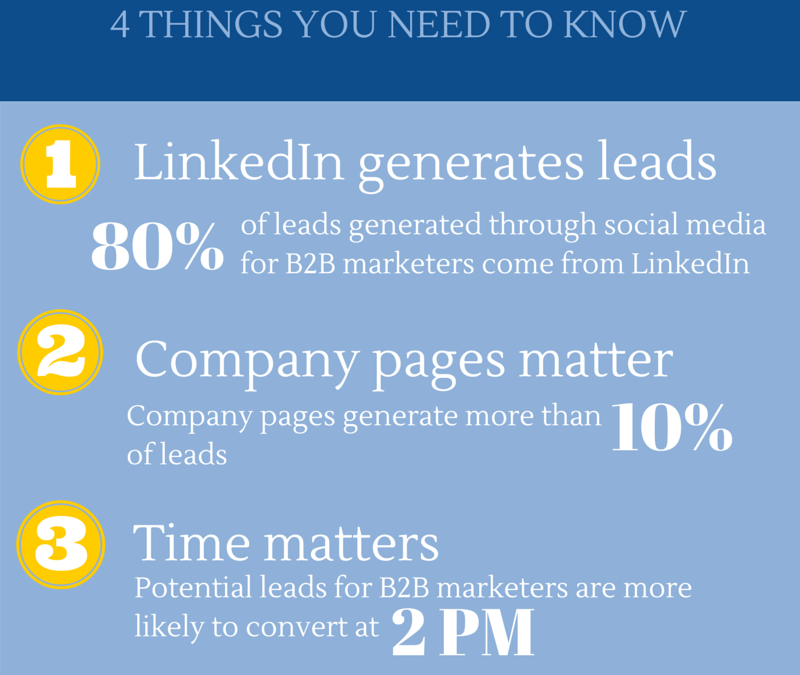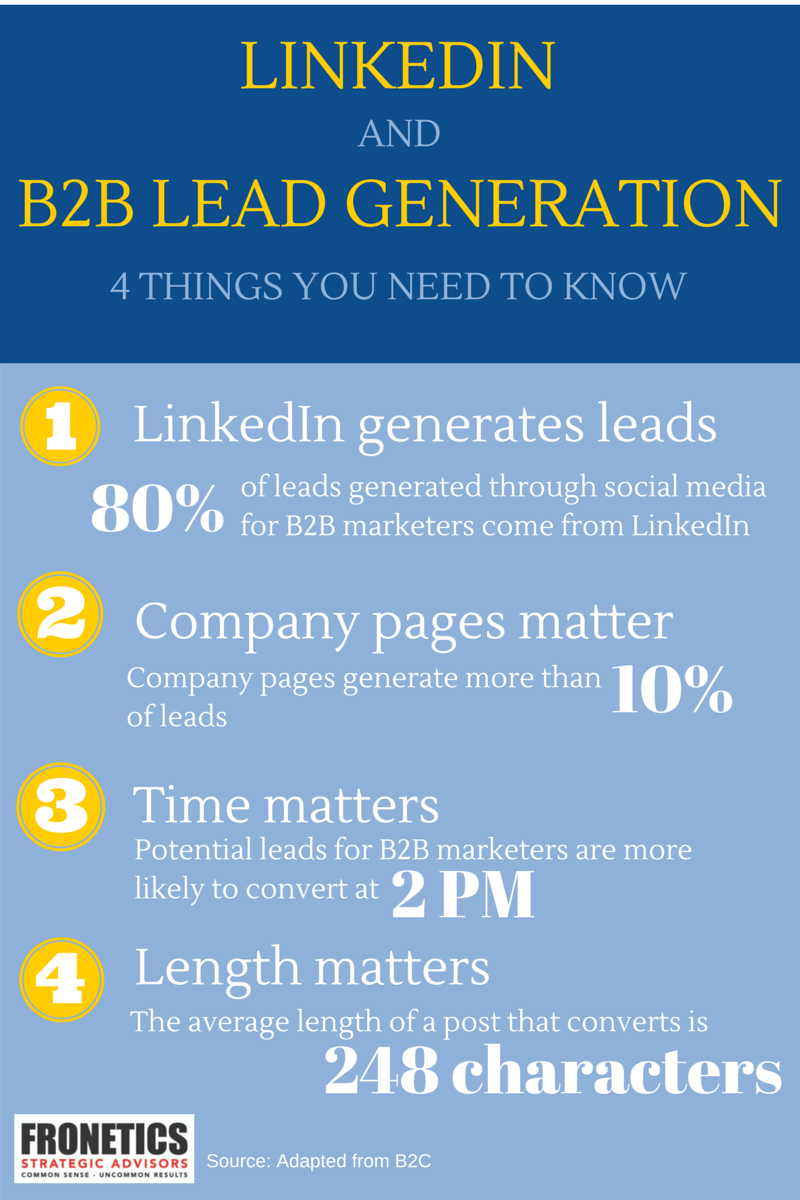
by Fronetics | Oct 6, 2015 | Blog, Marketing, Social Media, Strategy, Supply Chain

Companies within the logistics and supply chain industries have been slower to participate in social media than other industries. The primary reason being because of a lack of understanding of what social media is and the role it can play for business. Unfortunately, companies who do not participate in social media miss out on opportunities – and revenue.
Every day conversations are taking place about your company, your products and services, your industry, and your competitors. These conversations are not just happening over the water cooler, they are happening on social media. These conversations not only provide invaluable (and often strategic) information, they also serve to shape and define your company and your brand. With the advent of social media, the reality is that is the customer who drives your company’s image and brand message. If your company isn’t on social media you miss out.
Social listening
Social listening is the process of monitoring social media to identify and assess what is being said about a company, individual, brand, product, or service. Through social listening your company can not only become an innovation engine, you can also gain market intelligence, and you gain intelligence about how your company, products, and services are being perceived. Knowing this information in real-time is invaluable.
Caterpillar is one company that has embraced social listening. Caterpillar engages in social listening with the objectives of gaining deeper insight into:
- Who is talking about the company;
- What is being said about the company;
- What competitors are doing;
- Key influencers;
- The tone of conversations that are taking place.
Kevin Espinosa, Caterpillar’s eBusiness Loyalty Manager, further discusses the company’s social listening strategy and the benefits of social listening:
“If you haven’t started already, you have to start with social listening. It’s like building a large campus without the sidewalks. Let your audience lay down the paths and sidewalks they want to take. They’ll tell you where they’re participating and what they need. Then you can backfill with a strategy that addresses their needs. This is the push aspect of social media. Eventually, you get to the pull aspect, where the customer is a big contributor to your social media strategy. This is where there is truly two-way dialogue and relationship building.”
Engagement and action
To reap the benefits of social listening, including increasing your revenue, you need to use the information and intelligence gathered. For example, if you learn via social media that your customers are experiencing issues with a specific product, take steps to determine what the issues are, and then make changes to the product. The Aberdeen Group offers additional examples of how social listening has been and can be used: “companies can use the voice of the customer to make critical adjustments and find issues related to inventory allocation, order management, returns management, cost, overall service satisfaction and beyond.”
The opportunities the supply chain and logistics industries can realize through social listening are great. Not participating in social listening results in missed opportunities.
This post originally appeared on Electronics Purchasing Strategies.

by Fronetics | Jul 9, 2015 | Blog, Data/Analytics, Marketing, Social Media
 In what seemed like a curious social experiment, KLM Royal Dutch Airline harnessed the popularity of social media and launched their “Meet and Seat” program in 2012. The service gives passengers the option to link their social media profiles to their boarding information during the ticket purchase process. Once a traveler’s profile is linked, they gain access to other social profiles of travelers that have also opted in to the service. Underling the concept is the notion that travelers will choose seatmates based on the profiles of users with similar business or leisure interests. While KLM reports that over 50,000 flyers have utilized the service since its inception – enough for KLM to deem the program successful – what’s discernable from KLM’s efforts is that social media has become a major player in today’s business world.
In what seemed like a curious social experiment, KLM Royal Dutch Airline harnessed the popularity of social media and launched their “Meet and Seat” program in 2012. The service gives passengers the option to link their social media profiles to their boarding information during the ticket purchase process. Once a traveler’s profile is linked, they gain access to other social profiles of travelers that have also opted in to the service. Underling the concept is the notion that travelers will choose seatmates based on the profiles of users with similar business or leisure interests. While KLM reports that over 50,000 flyers have utilized the service since its inception – enough for KLM to deem the program successful – what’s discernable from KLM’s efforts is that social media has become a major player in today’s business world.
With a reported 8 out of 10 businesses using social media in the communication between their brand and their audiences, companies are spending more marketing dollars on social efforts with increasing regularity. But with its fairly recent introduction to the business world, many companies are struggling to determine whether their efforts, and their investments, are paying off. Fortunately, by focusing on a few key metrics, your company can start to understand which of your social efforts are adding value and, just as important, which ones are not.
Here are the 4 social metrics that matter:
Source Reports
The most common remark about measurement you’ll hear social media marketing experts say is that social media efforts shouldn’t be solely measured in likes and follows. It’s hard to connect the number of likes and follows to financial business metrics, so thinking about the success of your channels in different terms gives a more insightful report about how your social channels are performing. HubSpot recommends tracking the network source of your web traffic, leads, and customers to determine how your social platforms are performing.
Track: # of visits, leads, and customers for each of your social channels
Engagement and Amplification
“No man is an island,” wrote John Donne in his poem. His summation about the nature of humans is quite evident in social media. Indeed, one of the greatest benefits of social media is that it is by its very nature, social. For companies, social media exponentially expands the reach of its content by playing on the communal nature of these networks. If a company has 2,000 followers on Twitter, and each of them shared that company’s content with 200 of their followers, the amplification of its content has expanded to 200,000 users. Your business can leverage these immense networks by maintaining consistency in the quality and value of your content as this strategy will naturally inspire followers to share and repost your content. Track the types of content that drives the most amplification and identify trends in popular publishing times, then refine your efforts based on your analysis. Remember, as a business using social media, your end goal is action, not eyes. In other words, what’s important to your efforts is engagement. Pay close attention to how your followers are interacting with your content.
Track: # of Facebook Post Shares, # of Retweets, # of Twitter Mentions
Lead Generation
Put simply, lead generation activity lets you know whether your social content is generating leads and creating opportunities for your business. At the end of the day, your social efforts don’t matter if they aren’t playing a part in driving new business. Of particular value to your business is your conversion rate. Knowing how often content consumption results in a new lead will help you to build a more successful overall content strategy. Is your new infographic converting visitors to leads at a higher rate than your verbose Facebook posts? That might be a sign that your audience responds better to image-heavy content.
Track: # of form submissions, # of email subscribers, conversion rate
Return on Investment
If one of your company’s objectives for its social media participation is to drive growth, your company’s ROI calculation is one of the most important measurements of your social efforts. This measurement determines what impact your social content is having on customer acquisition and sales. Just as you would for all other marketing efforts, you need to know whether or not the investment you’re making in social media is producing a positive return for your business. To find your investment, start by calculating the total of your investment, your overhead factor, and your miscellaneous costs. To calculate your return, you’ll need to know your leads per month, your lead conversion rate, your average lifetime customer value, and average profit margin. Let’s take a look at how those factor into your ROI calculation in the example below.
To Calculate Investment
- Multiply the hours per month needed to create the content by the hourly rate of the employees used to create the content.
- Multiply the result by the overhead factor, taking into account rent, insurance, utilities, etc. (typically 50%)
- Add all other costs, such as design fees, hosting fees, subscriptions, software, etc. You may choose to allocate them to a specific piece of content or amortize them monthly and spread the costs evenly across each piece of content.
Calculation: At 40 hours/month at $40/hour to produce a corporate blog, multiplied by a 50% overhead factor. Add in $1k/month for design, $100/month for hosting, and $100/month for miscellaneous fees.
Total Investment in Monthly Blog = $3,600
To Calculate Return
Multiply your leads per month by your lead conversion rate, average lifetime customer value, and average profit margin.
Calculation: You collect 25 leads a month from your blog. At a 20% lead conversion rate, you’ll generate five new customers. Assume a $3,000 average lifetime customer value and a 30% average profit margin.
Total Monthly Blogging Return = $4,500
To Calculate Return on Investment
Subtract the investment from the return. Then, divide by the investment.
Calculation:
$4,500 – $3,600 = 900
900/3,600 = .25
ROI = 25%
Nearly 70% of communications professionals report dissatisfaction in how they’re measuring their social efforts. That’s understandable, social can be cumbersome to analyze. But looking at activity through the lens of your business objectives should really get to the heart of why your company participates in social media. In your work to distinguish your company from the thousands of others in the sea of social, seek to create rich and robust social experiences for your followers by connecting them with relevant and valuable content. Then measure that user activity and engagement to see how it is helping grow your business.
Fronetics Strategic Advisors is a leading management consulting firm. Our firm works with companies to identify and execute strategies for growth and value creation.
Whether it is a wholesale food distributor seeking guidance on how to define and execute corporate strategy; a telematics firm needing high quality content on a consistent basis; a real estate firm looking for a marketing partner; or a supply chain firm in need of interim management, our clients rely on Fronetics to help them navigate through critical junctures, meet their toughest challenges, and take advantage of opportunities. We deliver high-impact results.
We advise and work with companies on their most critical issues and opportunities: strategy, marketing, organization, talent acquisition, performance management, and M&A support.
We have deep expertise and a proven track record in a broad range of industries including: supply chain, real estate, software, and logistics.


by Fronetics | Mar 3, 2015 | Blog, Marketing, Social Media

Social listening creates opportunities.
Social listening is the process of monitoring social media to identify and assess what is being said about a company, individual, brand, product, or service. Through social listening you can gain market intelligence and intelligence about how your brand is perceived, and you can drive innovation. Moreover, as Daniel Newman points out, social listening has become an integral part of the entire customer lifestyle.
Reaping the benefits of social listening
To reap the benefits of social listening it is essential that you use the information and intelligence gathered. Tracx offers up a great example of how social listening can guide a merchandisers’ supply chain management. Specifically, how a company can transform social media management by guiding inventory allocation and velocity.
The Aberdeen Group offers additional examples of how social listening has been and can be used: “companies can use the voice of the customer to make critical adjustments and find issues related to inventory allocation, order management, returns management, cost, overall service satisfaction and beyond.”
Tools for social listening
Brad Neathery, founder of Social Media Today, put together a great list of social listening tools that give businesses the right data they need to align their social marketing strategy with business goals. His list includes:
1. Social Mention
2. SocialRest
3. TweetReach
4. ViralHeat
5 Datasift
6 Simply Measured
7 Sysomos
8 Zoomph
The opportunities the supply chain and logistics industries can realize through social listening are great. Not participating in social listening results in missed opportunities including increased revenue.

by Fronetics | Mar 3, 2015 | Blog, Marketing, Social Media

Social listening creates opportunities.
Social listening is the process of monitoring social media to identify and assess what is being said about a company, individual, brand, product, or service. Through social listening you can gain market intelligence and intelligence about how your brand is perceived, and you can drive innovation. Moreover, as Daniel Newman points out, social listening has become an integral part of the entire customer lifestyle.
Reaping the benefits of social listening
To reap the benefits of social listening it is essential that you use the information and intelligence gathered. Tracx offers up a great example of how social listening can guide a merchandisers’ supply chain management. Specifically, how a company can transform social media management by guiding inventory allocation and velocity.
The Aberdeen Group offers additional examples of how social listening has been and can be used: “companies can use the voice of the customer to make critical adjustments and find issues related to inventory allocation, order management, returns management, cost, overall service satisfaction and beyond.”
Tools for social listening
Brad Neathery, founder of Social Media Today, put together a great list of social listening tools that give businesses the right data they need to align their social marketing strategy with business goals. His list includes:
1. Social Mention
2. SocialRest
3. TweetReach
4. ViralHeat
5 Datasift
6 Simply Measured
7 Sysomos
8 Zoomph
The opportunities the supply chain and logistics industries can realize through social listening are great. Not participating in social listening results in missed opportunities including increased revenue.

by Fronetics | Dec 18, 2014 | Blog, Marketing, Social Media, Strategy
Oktopost, a social media marketing platform, analyzed over 100,000 posts on four different social networks (LinkedIn, Twitter, Facebook, and Google+) and found that LinkedIn is the most effective social network for B2B.
Oktopost found that more than 80% of B2B leads were generated through LinkedIn. Lead generation through other social networks paled in comparison:
- Twitter: 12.73%
- Facebook: 6.73%
- Google+: 0.21%
We’ve put together an infographic that outlines four things you need to know about LinkedIn and lead generation.







